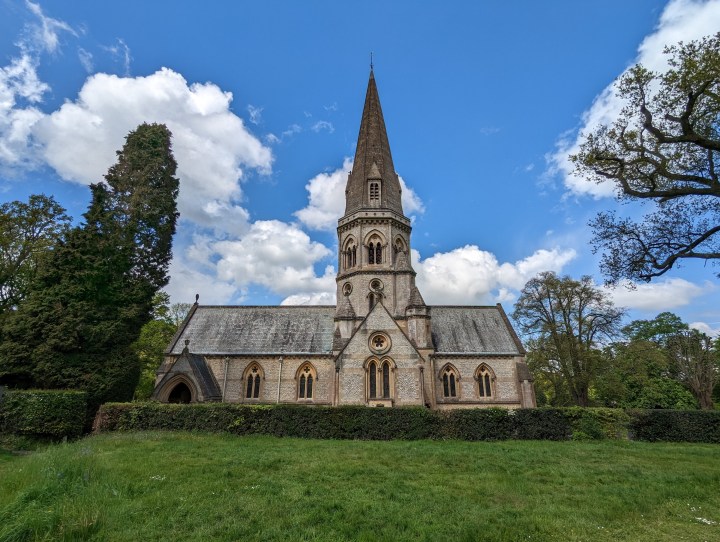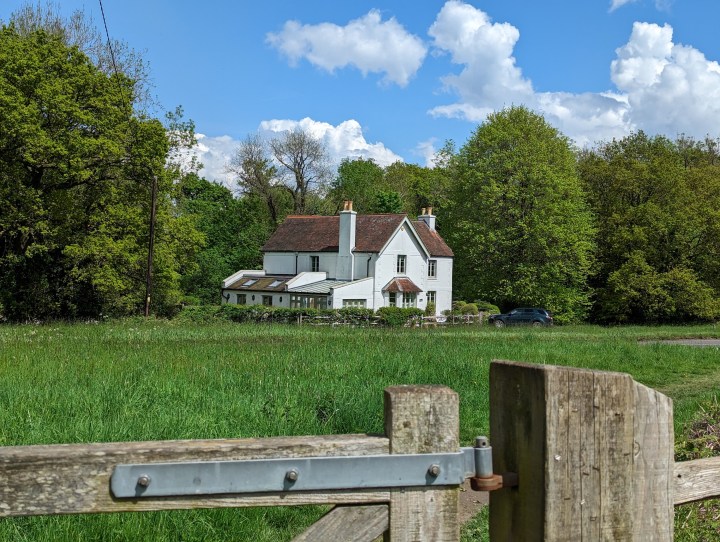There is only a $100 difference in price between the Google Pixel 7 and the new Google Pixel 7a, so if you’re looking at one, it makes sense to look at the other, too.
You can either save some money or get a better model for not much more cash. But which camera is better? On paper, the Pixel 7 seems like it should win, but what about in reality? We’ve found out. There is a decisive winner here, just not the one you expect.
Pixel 7 vs. Pixel 7a: camera specifications

Let’s start with the Pixel 7, which was released in October 2022. A 50-megapixel main camera sits alongside a 12MP wide-angle camera, and there’s a laser autofocus sensor and a spectral anti-flicker sensor too. The main camera provides an 8x Super Res Zoom, while the wide-angle takes photos with a 114-degree field-of-view (FOV). The Pixel 7 has optical and electronic image stabilization (OIS and EIS) and a 10.8MP selfie camera with fixed focus.
The Pixel 7a is a little different, swapping the 50MP camera for a 64MP main camera, again providing an 8x Super Res Zoom. This isn’t an optical zoom, but it uses Google’s software expertise to ensure the zoomed shots look as good as possible. The wide-angle camera has 13MP and a 120-degree FOV, plus there’s OIS and EIS and phase detection autofocus. The selfie camera has 13MP and fixed focus.

When you dig more into the specification, other differences emerge. The Pixel 7 has larger 1.2nm pixels compared to the Pixel 7a’s 0.8nm pixel width, the aperture is f/1.89 on the Pixel 7a compared to the f/1.85 on the Pixel 7, and the sensor itself is 1/1.73 inches on the Pixel 7a, while the Pixel 7 has a 1/1.31-inch sensor. The Pixel 7a also saves photos by default at a higher pixel count than the Pixel 7. A Pixel 7a photo is 4624 x 3472 pixels, while the Pixel 7’s photos are 4080 x 3072 pixels. You can take a closer look at even more spec differences in our full Pixel 7a vs. Pixel 7 comparison.
What will these mean to the photos? We took a variety of shots over several days and in different conditions to find out.
Pixel 7 vs. Pixel 7a: main camera
The two phones may have different main camera sensors, but there is very little difference between the photos, and only if you directly compare the two (and only when you really criticize) will you notice them. If you use the main camera most of the time, then either phone will work for you, and both take fantastic photos.
This is worth saying right up front, along with how much I’ve enjoyed taking photos with both the Pixel 7 and Pixel 7a and have gone out of my way to find new and interesting subjects. Some of the photos were taken on King Charles’s coronation weekend in the U.K., and I was pleased to have the Pixel phones as I was assured the images I took would be of great quality. I love the way they both inspire confidence and creativity.
- 1. Google Pixel 7
- 2. Google Pixel 7a
The first photo shows the Pixel 7a delivering some deeper colors, but this is not a trend, as sometimes the Pixel 7 does the same. The level of detail, which is impressive, is identical in both — right down to the tread pattern on the Triumph Stag’s tires. White balance and contrast vary slightly between them, with the Pixel 7 improving over the 7a, but it’s such a small difference it’s hard to say one is better than the other.
- 1. Google Pixel 7
- 2. Google Pixel 7a
You can also see this in the second photo, where the Pixel 7’s photo emphasizes the white side panels on the van more than the Pixel 7a, and the colors are perhaps a tiny bit more vibrant. However, the level of detail is identical, as is the tone and the atmosphere. You have to zoom in and nitpick to spot the noise in the Pixel 7a’s clouds, but few will be overly concerned about it.
- 1. Google Pixel 7
- 2. Google Pixel 7a
The photo of the muffin demonstrates the depth of field possible with the main camera in the right circumstances, and also the detail both produce. Again, the white balance is better in the Pixel 7’s photo, but the overall tone is more pleasing from the Pixel 7a, and a slight edit to boost the exposure would make it really pop. Generally, the Pixel 7a is better for close-up photos than the Pixel 7, which sometimes failed to focus effectively.
- 1. Google Pixel 7
- 2. Google Pixel 7a
The final photo minimizes the differences in color, contrast, and white balance, and if there is any additional noise in the Pixel 7a’s photo, you really have to look hard to see it. Both provide pretty much the same interpretation of the scene, and the differences don’t make one photo better. The main camera category is simply too close to call, and I’d be happy with any of the photos taken with either camera.
Winner: Draw
Pixel 7 vs. Pixel 7a: wide-angle camera
If you want to take wide-angle photos that look like wide-angle photos, then the Pixel 7a is the phone to choose here, as its 120-degree field of view returns a far more expansive image than the Pixel 7’s tight 114-degree FOV. It’s immediately noticeable, too, as you can see in our first photo of the church.
- 1. Google Pixel 7
- 2. Google Pixel 7a
There’s so much more of the surroundings in the Pixel 7a’s photo, but the camera doesn’t distort the image too much, so it does appear fairly natural. The Pixel 7’s photo avoids fish-eye distortion but at the expense of an epic, wide-angle view. I prefer the Pixel 7a’s exposure and the brightness of the image in general, although the Pixel 7 does make the sky a little more attractive.
The Pixel 7a’s fish-eye effect is more noticeable in the second photo, with the fence posts appearing at a far greater angle than in the Pixel 7’s photo, but the deeper into the image you look, the less obvious it becomes. The colors, contrast, and exposure look very similar, but again you “see” more in the Pixel 7a’s photo.
- 1. Google Pixel 7
- 2. Google Pixel 7a
The photos appear very similar, but the Pixel 7a’s wider field of view separates it more from the main camera, while the Pixel 7’s photos can appear almost the same regardless of which camera you use. I want wide-angle cameras to take wide-angle photos, and this has let the Pixel 7 down in previous tests too. It gives the Pixel 7a the win here, and this may prove to be very decisive later on.
Winner: Google Pixel 7a
Pixel 7 vs, Pixel 7a: 2x zoom
Both the Pixel 7 and Pixel 7a provide a 2x shortcut in the camera app, tempting you into using the zoom mode despite it not being an optical zoom. Here, we can see how Google’s Super Res Zoom performs at a modest setting. You certainly shouldn’t be put off using it, which is probably the best news here.
- 1. Google Pixel 7
- 2. Google Pixel 7a
The first photo of the field and house shows a similar level of detail in both images, while the Pixel 7 has a marginally better focus in the midpoint of the photo, but it doesn’t make a lot of difference to the scene. The color treatment is also different, with the Pixel 7a’s green tones being more accurate to real life, but few will complain about the Pixel 7’s look.
- 1. Google Pixel 7
- 2. Google Pixel 7a
The second photo is all about the white balance, which has been a theme running throughout the test, as both treat the color of the car slightly differently. Personally, I look at the Pixel 7’s photo and prefer it, but there is more of a blue tint to the white than in the Pixel 7a’s photo, and arguably, it’s more true to life due to this. Detail is no different, as is the depth of field created, and one photo is not technically better than the other.
Winner: Draw
Pixel 7a vs. Pixel 7a: night mode
Both the Pixel 7 and the Pixel 7a take great lowlight photos, and throughout all the images I examined, the tone, coloration, and exposure were almost identical. However, when you look at them very closely, in some situations, the Pixel 7 is superior to the Pixel 7a. We’ve put the examples into two galleries, starting with the Pixel 7a.
The Pixel 7a’s lowlight photos are superb when you take into consideration the price of the phone and its direct competition. There’s almost no visible edge enhancement, colors are realistic and natural, and there are always masses of detail. It does seem to pitch the white balance better than the Pixel 7, but it’s only sometimes — and only when you really challenge the camera by prompting that kind of test.
Where does the Pixel 7 improve? It’s all about sharpness. In dark and low light environments, the Pixel 7’s photos are steadier and sharper than the Pixel 7a’s, and it’s particularly noticeable when you’re looking closely at text or signage in the examples in our galleries. While it doesn’t ruin the Pixel 7a’s photos, the noise (and subsequent smoothing) and ever so slight blur do detract from the otherwise great images. The Pixel 7’s larger pixels make the difference in this category.
Winner: Google Pixel 7
Pixel 7 vs. Pixel 7a: portrait mode
There’s no point looking at the portrait mode to try and decide a winner here either, as this photo of a friendly dog proves. Edge recognition in both is good, with individual hairs mostly isolated in a convincing way, and both even have the same haloing effect in similar places too. The colors captured by the Pixel 7 and Pixel 7a, along with the detail on the dog’s collar and nose, are essentially identical.
- 1. Google Pixel 7
- 2. Google Pixel 7a
The photo of the car’s headlight and front wheel shows how both can differ in composition. I shot the image from the same position with the same setting in the camera, but the Pixel 7a added a far greater blur effect by default than the Pixel 7.
- 1. Google Pixel 7
- 2. Google Pixel 7a
This didn’t happen all the time, though, and our final photo in the set shows — once again — just how similar the two cameras are. It also reminds us how Google’s software works almost identically across all its cameras, regardless of the phone.
Winner: Draw
Pixel 7 vs. Pixel 7a: selfie camera
The selfies in the gallery were taken on two different days in quite different weather conditions. One has portrait mode active, and the other is without. These are the differences between the photos, and while there is a difference in camera spec, there really isn’t much to choose between the photos here either.
Skin tone is great (it should be, given Google’s research into the subject), background colors are natural, and there’s a decent level of detail. I’ve seen sharper selfies from other cameras (the Galaxy Z Flip 4, for example), but overall the two Pixel phones take excellent selfies. They don’t take selfies that look any different from each other, though, which means we’ve got another draw.
Winner: Draw
The winner is: you

The Google Pixel 7 and Pixel 7a’s camera test has resulted in a draw, with both cameras taking a single win each and drawing in the other categories. Neither phone has won, but anyone considering buying a Pixel phone definitely has, making you the winner. The closeness means you can buy the cheaper Pixel 7a without worrying about an inferior camera, as unless you really examine the photos, both take basically the same image.
Yes, there are differences between them, but they don’t make a photo or the camera in general dramatically better or worse than the other. Genuinely, whichever one you choose, the camera is going to really impress. What’s more, there’s very little to choose between the two phones themselves on a performance or ability level either. While the Pixel 7a didn’t actually win the comparison, it’s really our recommendation due to it matching the Pixel 7 but at a lower price.
































